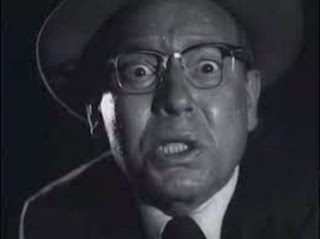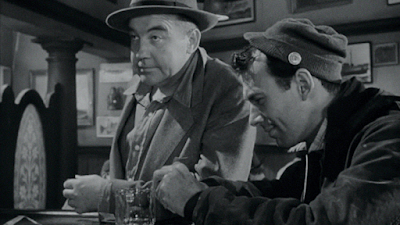This
Cold War spy film, co-written and directed by Samuel Fuller for 20th
Century Fox earned modest success at the box office from a tight
budget. With great pacing and solid performances, the film is nicely supported by a score that is, at times,
elaborately arranged by the significant film composer, Leigh Harline. In a general sense, the film can be distasteful and made it controversial in
its day. Over the years since, reading between the screenplay lines,
many Twenty-First Century critics have placed the film on a pedestal
for those very same reasons. In contrast, moviegoers of the era were
able to quickly categorize the film upon exiting the theater. And
their reviews were mixed. Reviews were decidedly one-sided for Fuller's remake in 1967. A full-color disaster starring a dull James Brolin and a miscast Jacqueline Bisset made the original screenplay a talk-fest of major proportions, lacking any style or intrigue.
The film
opens on a crowded New York City subway train as Government agent,
Willis Bouchey, has his eyes trained on Jean Peters, whose dark
lipstick, false eyelashes and dress convey her persona. Also
sandwiched between them is a professional pickpocket, Richard Widmark, who
deftly steals Peters' wallet during the jostling ride. Neither knows
the vital contents inside. Widmark just hopes to inherit some cash or
jewels. Peters' ex-boyfriend, Richard Kiley, has told her the wallet
contains stolen business secrets, unaware that she has naively gotten
herself wrapped up in a Communist plot. Widmark persistently denies he stole any microfilm but the detectives, sensing he is not on the level, offer him a deal to clear his record if he hands it over.
For most
of her roles, seemingly in the same wardrobe, I can only take Thelma
Ritter (above) in small doses. Her scenes here are actually that. Here she again plays the savvy, wiseacre
informant to the police. A knowledge she has accrued since childhood,
I gather, as a school's classroom was either not available or school
was just not her thing. She knows the crime underbelly better than
the police. She is called in to identify the pickpocket's style based
on Bouchey's observations. A mugshot quickly pinpoints Widmark. Her value to the police
department has deadly consequences, however.
Kiley
demands Peters get the microfilm from Widmark as only she can.
Thinking he has an ace up his sleeve, Widmark plans to seek a huge
cash reward for the film. But Kiley's plan goes awry as
Peters takes his place. Upon her return Kiley finds a key film frame missing. He takes his anger out on her. Time being critical, Communist agents order Kiley
to deliver the film as is. Recognizing Kiley from his earlier attempted visit, Widmark tails him onto the subway train where he
pickpockets his handgun. The film exchange is witnessed in a
subway station restroom then Widmark chases Kiley through the subway for the film's climax.
Note:
Jean Peters sells this performance of a woman who has lived off the
streets most of her life, earning a “living” as needed. Like
Ritter, she has connections. Unlike Ritter, she is on the opposite
end of the visual spectrum. She has never known real respect or
unconditional love but Widmark makes an attempt. In the early scenes,
with an airy dress more suited for the beach, it is not exactly what
June Cleaver would ever consider. I cannot imagine another actress
who could fill this part as well. If ten years younger, perhaps Ida
Lupino. The other female options of the era would either have been
too sophisticated or too overt.



































